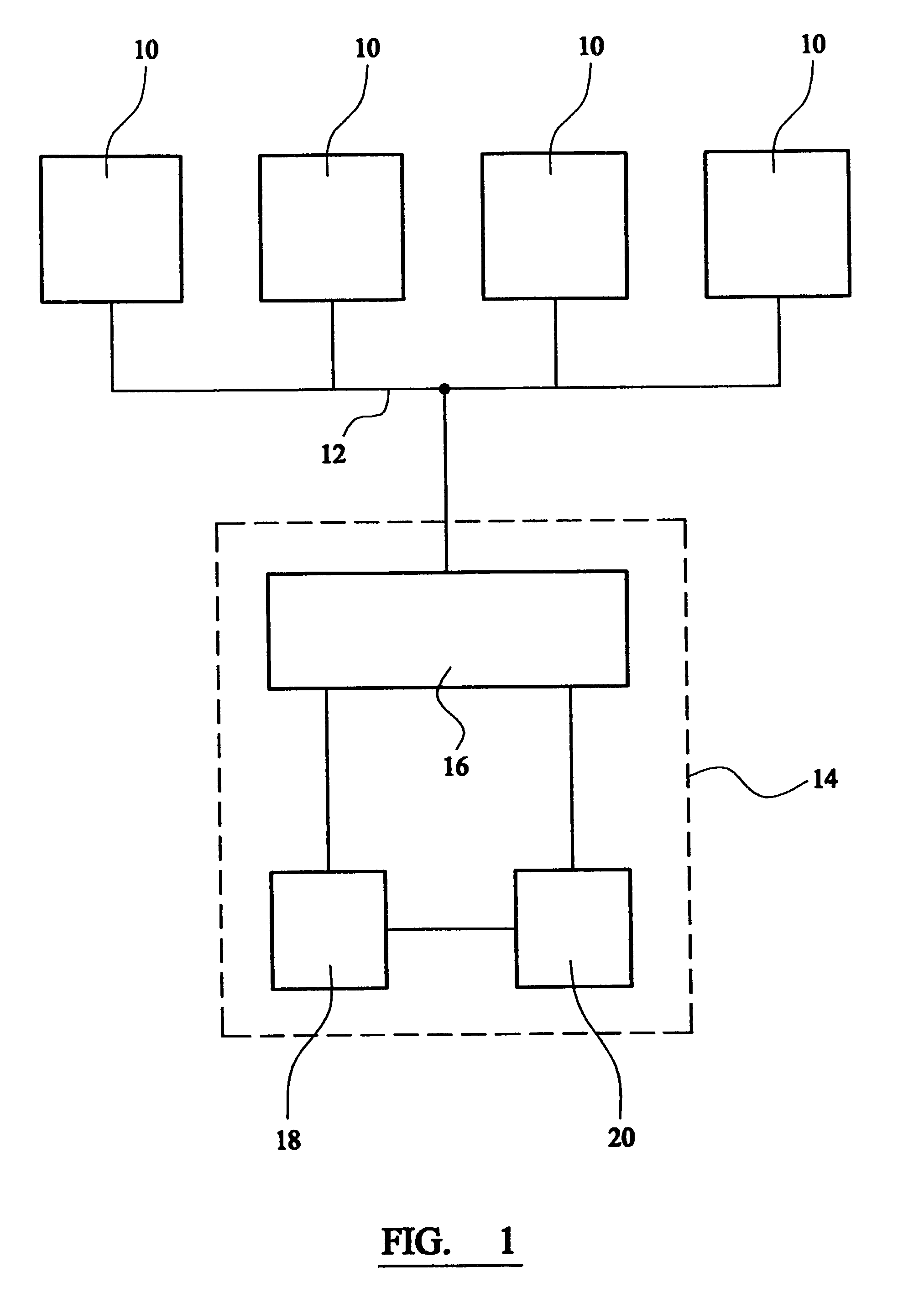Method and apparatus for controlling a plurality of image capture devices in a surveillance system
a technology of image capture device and surveillance system, which is applied in the direction of television system, burglar alarm, instruments, etc., can solve the problems of system inefficiency, redundancy of rest of image capture device (and their respective monitors or screens), and difficulty for a single viewer to monitor
- Summary
- Abstract
- Description
- Claims
- Application Information
AI Technical Summary
Benefits of technology
Problems solved by technology
Method used
Image
Examples
Embodiment Construction
[0023]Referring to FIG. 1 of the drawings, a surveillance system according to an exemplary embodiment of the present invention comprises a plurality of video cameras 10 mounted or otherwise placed in spaced apart relation within an area to be monitored. In a preferred embodiment, the cameras 10 are positioned such that the edges of the fields of view of adjacent cameras are either immediately next to each other (i.e. with little or no gap) or even slightly overlap to prevent “blind spots”.
[0024]The cameras 10 are linked (either by hard wired connections 12 or wireless links) to an ethernet-based control unit 14. The control unit 14 includes an interface 16 for receiving the outputs from the cameras 10 and sending signals to the cameras to alter their operating mode, as necessary.
[0025]The control unit 14 further comprises a motion detection apparatus 18 for monitoring the images received from the cameras 10 and detecting motion therein. In one embodiment of the present invention, th...
PUM
 Login to View More
Login to View More Abstract
Description
Claims
Application Information
 Login to View More
Login to View More - R&D
- Intellectual Property
- Life Sciences
- Materials
- Tech Scout
- Unparalleled Data Quality
- Higher Quality Content
- 60% Fewer Hallucinations
Browse by: Latest US Patents, China's latest patents, Technical Efficacy Thesaurus, Application Domain, Technology Topic, Popular Technical Reports.
© 2025 PatSnap. All rights reserved.Legal|Privacy policy|Modern Slavery Act Transparency Statement|Sitemap|About US| Contact US: help@patsnap.com



